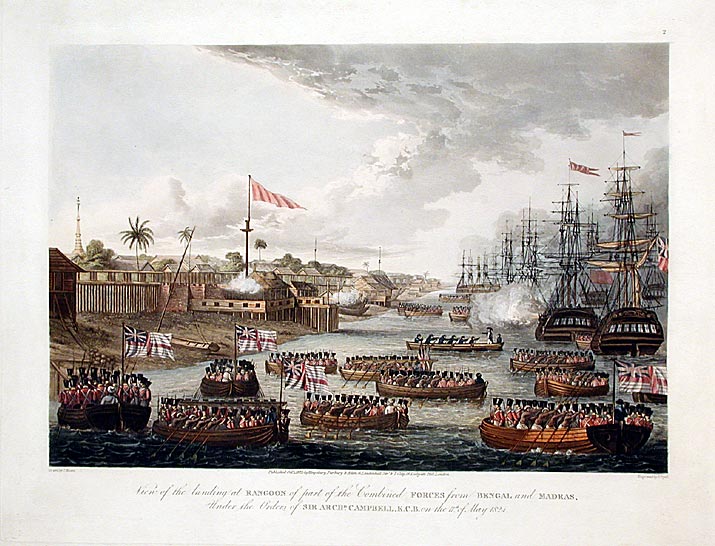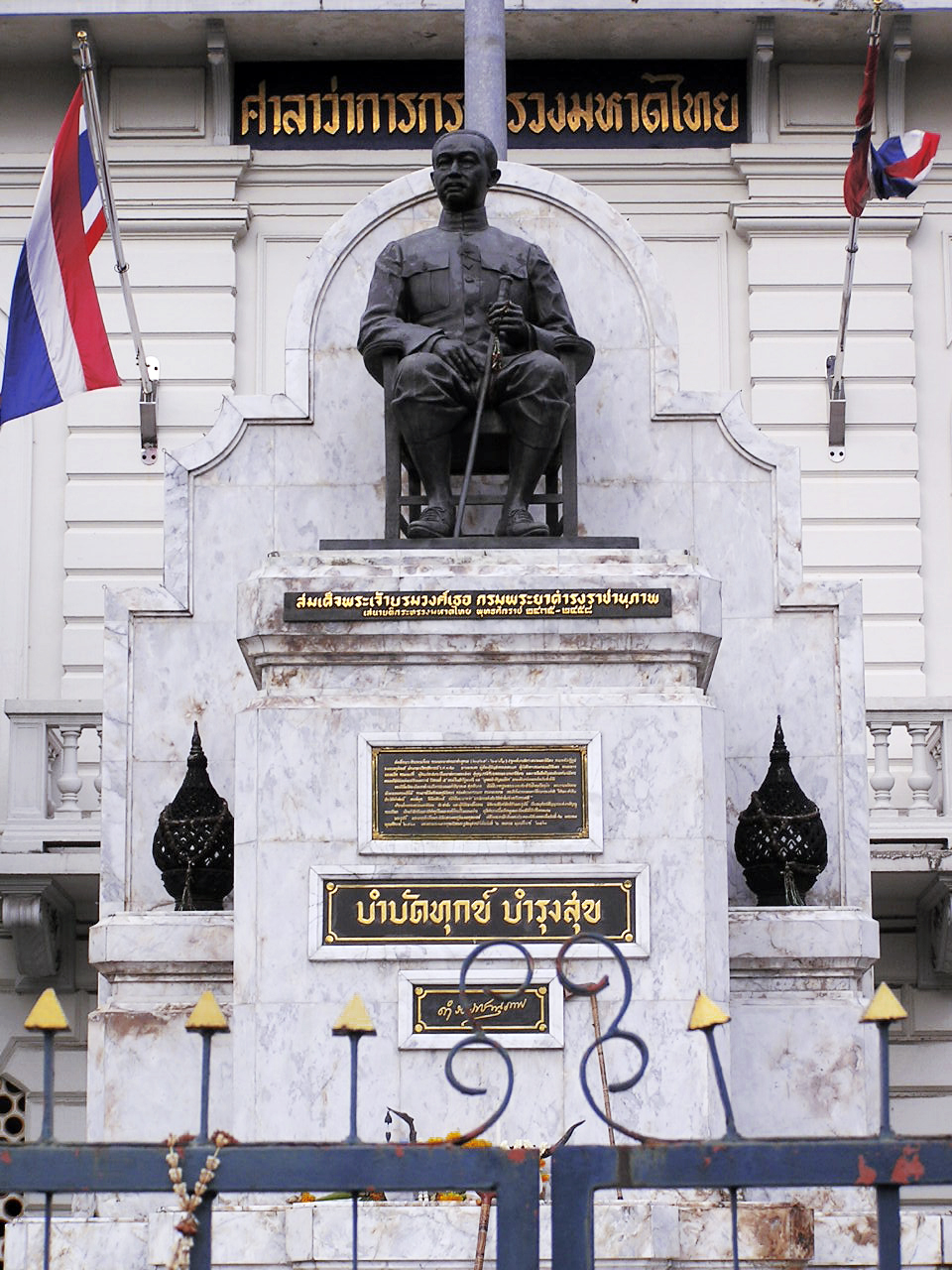|
Yommarat
Yommarat ( th, ยมราช) is a Thai noble title historically given to the minister of the Krom Mueang or Nakhonban, one of the four ministries under the ''chatusadom'' system, charged with keeping the peace in the capital. Holders of the title were usually given the high rank of ''phraya'' or ''chaophraya''. List of titleholders Past holders of the title include: During the Thonburi period: *Phraya Yommarat (Baen) – Later became Chaophraya Aphaiphubet. During the Rattanakosin period #Phraya Yommarat (In) – Named by King Rama I when he assumed the throne and founded the Chakri Dynasty in 1782. Stripped of the title as punishment for mistakes made in the Burmese–Siamese War (1785–1786). #Chaophraya Yommarat (Bunnag) – Named following the war; later became Chaophraya Mahasena, the ''samuhakalahom''. #Chaophraya Yommarat (Bunma) – Later became Chaophraya Mahasena. #Chaophraya Yommarat (Noi Punyaratabandhu) – Served King Rama II; later became Chaophraya Aphaiph ... [...More Info...] [...Related Items...] OR: [Wikipedia] [Google] [Baidu] |
Chaophraya Yommarat (Noi Punyaratabandhu)
''Chaophraya'' Aphaiphuthon ( th, เจ้าพระยาอภัยภูธร ? - 1827), personal name Noi ( th, น้อย), was the ''Samuha Nayok'' ( th, สมุหนายก) or Prime Minister of Northern Siam from 1813 to 1827. He was a member of the Punyaratabandhu ( th, บุณยรัตพันธุ์) family. Noi was a son of ''Chaophraya'' Sithammathirat ( th, เจ้าพระยาศรีธรรมาธิราช), personal name Boonrot, who was the Minister of Palatial Affairs during the reigns of King Taksin and King Rama I. In 1785, during the Nine Armies' War, Noi's father ''Chaophraya'' Thamma Boonrot was stripped of his position due to a mismanagement during the war. His father was later restored to the position of ''Chaophraya'' Sithammathirat as the master of palace ceremonies. Noi's sister, Lady Pi, became a consort of Prince Itsarasunthon. In 1809, King Rama I passed away and was succeeded by his son Prince Itsarasunthon as ... [...More Info...] [...Related Items...] OR: [Wikipedia] [Google] [Baidu] |
Chaophraya Yommarat (Pan Sukhum)
Pan Sukhum ( th, ปั้น สุขุม), better known by the noble title Chaophraya Yommarat (, 1862 – 30 December 1938), was a Thai government official who served several senior positions under the governments of kings Chulalongkorn (Rama V) and Vajiravudh (Rama VI). Born in Suphan Buri, Pan was raised as a novice Buddhist monk in Bangkok and left the monkhood to join government service around the age of 21, becoming a teacher at the royal palace school and then a tutor to Chulalongkorn's children studying in England, where he served as a diplomat for 11 years. He then became commissioner of Monthon Nakhon Si Thammarat under the new '' monthon'' administration system for 12 years, and was later appointed to several successive ministerships in the reformed government system: those of Public Works, Metropolitan Affairs, and Interior. He oversaw various modernizing public works projects, including the introduction of electricity and waterworks in the capital and the es ... [...More Info...] [...Related Items...] OR: [Wikipedia] [Google] [Baidu] |
Rama I
Phra Phutthayotfa Chulalok Maharaj (, 20 March 1737 – 7 September 1809), personal name Thongduang (), also known as Rama I, was the founder of the Rattanakosin Kingdom and the first monarch of the reigning Chakri dynasty of Siam (now Thailand). His full title in Thai is ''Phra Bat Somdet Phra Paramoruracha Mahachakkriborommanat Phra Phutthayotfa Chulalok'' (). He ascended the throne in 1782, following the deposition of King Taksin of Thonburi. He was also celebrated as the founder of Rattanakosin (now Bangkok) as the new capital of the reunited kingdom. Rama I was born from a Mon male line descent family, great-grandson of Kosa Pan. His father served in the royal court of the Ayutthaya Kingdom, and had served King Taksin in wars against the Burmese Konbaung dynasty and helped him in the reunification of Siam. During this time he emerged as Siam's most powerful military leader. Thongduang was the first '' Somdet Chao Phraya'', the highest rank the nobility could attain ... [...More Info...] [...Related Items...] OR: [Wikipedia] [Google] [Baidu] |
Thai Noble Title
The Thai nobility was a social class comprising titled officials (''khunnang'', th, ขุนนาง) in the service of the monarchy. They formed part of a hierarchical social system which developed from the time of the Ayutthaya Kingdom (14th century – 1767), through the Thonburi (1767–1782) and early Rattanakosin (1782 onwards) periods. Reforms by King Chulalongkorn ended the system around the end of the 19th century, though noble titles continued to be granted until the abolition of absolute monarchy in 1932. Thai noble titles comprise a rank and a title, which denote the holder's post or office. Unlike in European aristocracies, Thai noble titles were not inherited, but individually granted based on personal merit. Nevertheless, familial influence was substantial, and some families were able to accumulate large amounts of wealth and power, especially during the 17th to 19th centuries. History While the use of noble rank and title words are found in the documents of man ... [...More Info...] [...Related Items...] OR: [Wikipedia] [Google] [Baidu] |
Phraya
The Thai nobility was a social class comprising titled officials (''khunnang'', th, ขุนนาง) in the service of Thai monarchy, the monarchy. They formed part of a hierarchical social system which developed from the time of the Ayutthaya Kingdom (14th century – 1767), through the Thonburi Kingdom, Thonburi (1767–1782) and early Rattanakosin Kingdom, Rattanakosin (1782 onwards) periods. Reforms by King Chulalongkorn ended the system around the end of the 19th century, though noble titles continued to be granted until the abolition of absolute monarchy in Thailand, abolition of absolute monarchy in 1932. Thailand, Thai noble titles comprise a rank and a title, which denote the holder's post or office. Unlike in European aristocracies, Thai noble titles were not inherited, but individually granted based on personal merit. Nevertheless, familial influence was substantial, and some families were able to accumulate large amounts of wealth and power, especially during the 17th ... [...More Info...] [...Related Items...] OR: [Wikipedia] [Google] [Baidu] |
Chaophraya (title)
The Thai nobility was a social class comprising titled officials (''khunnang'', th, ขุนนาง) in the service of the monarchy. They formed part of a hierarchical social system which developed from the time of the Ayutthaya Kingdom (14th century – 1767), through the Thonburi (1767–1782) and early Rattanakosin (1782 onwards) periods. Reforms by King Chulalongkorn ended the system around the end of the 19th century, though noble titles continued to be granted until the abolition of absolute monarchy in 1932. Thai noble titles comprise a rank and a title, which denote the holder's post or office. Unlike in European aristocracies, Thai noble titles were not inherited, but individually granted based on personal merit. Nevertheless, familial influence was substantial, and some families were able to accumulate large amounts of wealth and power, especially during the 17th to 19th centuries. History While the use of noble rank and title words are found in the documents of man ... [...More Info...] [...Related Items...] OR: [Wikipedia] [Google] [Baidu] |
Phraya Yommarat (Baen)
Chaophraya Aphaiphubet (Baen) ( th, เจ้าพระยาอภัยภูเบศร (แบน), km, ចៅពញាអភ័យធីបែស បែន, ?–1811), also known as Chaofa Talaha (Baen) ( km, ចៅហ្វាទឡ្ហៈបែន, th, เจ้าฟ้าทะละหะ (แบน)) or Chau Hua Pen ( km, ចៅហ្វ៊ាបែន), was a Cambodian officer, later a Siamese governor. He was known in Vietnamese contexts as Chiêu Thùy Biện (昭錘卞). Baen was a Khmer noble with the title Oknya Yomreach (, or '' Phraya Yommarat'' in Thai). In 1782, Baen and Oknya Kalahom (Suos) () captured the pro-Vietnamese regent Talaha (Mu) and had him executed. Soon Baen came into conflict with his ally, Suos. Baen assassinated Suos. Knowing Suos was killed, Cham rebels attacked Phnom Penh,ศานติ ภักดีคำ. เขมรรบไทย. กทม. มติชน. 2554. หน้า 272 forcing Baen, King Ang Eng and Oknya ... [...More Info...] [...Related Items...] OR: [Wikipedia] [Google] [Baidu] |
Chaophraya Bodindecha
''Chao Phraya'' Bodindecha ( th, เจ้าพระยาบดินทรเดชา, km, ចៅ ឃុន បឌិន, 13 January 1776 – 24 June 1849), personal name Sing Sinhaseni (), was a prominent military figure of the early Rattanakosin Kingdom period during the reign of King Rama III. Bodindecha hold the post of ''Samuha Nayok'' () the Prime Minister of Northern Siam from 1827 to 1849. He was known for his leading roles in putting down the Laotian Rebellion of King Anouvong of Vientiane () and Siamese-Vietnamese Wars in 1831–1834 and 1841–1845 (). His descendants bear the surname Sinhaseni (). Life Bodindecha was born on 13 January 1776 in modern Phra Nakhon District during the Thonburi Kingdom period, with personal name Sing (lit. "Lion"), as the fourth child to ''Chao Phraya'' Aphairacha Pin. His mother was Lady Fug. His father, ''Chao Phraya'' Aphairacha Pin, had served as ''Samuha Kalahom'' () the Prime Minister of Southern Siam from 1805 ... [...More Info...] [...Related Items...] OR: [Wikipedia] [Google] [Baidu] |
Rama III
Nangklao ( th, พระบาทสมเด็จพระนั่งเกล้าเจ้าอยู่หัว, ; 31 March 1788 – 2 April 1851), birth name Thap ( th, ทับ), also styled Rama III, was the third king of Siam under the House of Chakri, ruling from 21 July 1824 to 2 April 1851. Nangklao was the eldest surviving son of his predecessor, king Rama II. His mother Sri Sulalai was one of the king's secondary wives. Nangklao was likely designated as heir by his father, his accession was uncontested and smoothly confirmed by the grand council. Foreign observers, however, falsely perceived him as having usurped the prior claim of his half-brother Prince Mongkut, who was younger, but born to queen Sri Suriyendra and thus " legitimate" according to Western customs. Under the old concept of Thai monarchy, however, a proper king must emulate Maha Sammata in that he must be "elected by the people." Ironically, Prince Mongkut may have later contributed to thi ... [...More Info...] [...Related Items...] OR: [Wikipedia] [Google] [Baidu] |
Ministry Of Interior (Thailand)
The Ministry of Interior of the Kingdom of Thailand ( Abrv: MOI; th, กระทรวงมหาดไทย, ) is a cabinet-level department in the Government of Thailand. The ministry has wide ranging responsibilities. It is responsible for local administration, internal security, citizenship, disaster management, road safety, land management, issuance of national identity cards, and public works. The ministry is responsible for appointing the 76 governors of the Provinces of Thailand. The Minister of Interior ( th, รัฐมนตรีกระทรวงมหาดไทย) is the head of the ministry. He is appointed by the King of Thailand on the recommendation of the prime minister. Since 30 August 2014, the head of the ministry has been retired General Anupong Paochinda. He is aided by two deputy ministers. The FY2019 budget of the ministry is 371,802 million baht. History The ministry in its present form was founded on 1 April 1892 by King Chulalongkorn (Rama V ... [...More Info...] [...Related Items...] OR: [Wikipedia] [Google] [Baidu] |
Taksin
King Taksin the Great ( th, สมเด็จพระเจ้าตากสินมหาราช, , ) or the King of Thonburi ( th, สมเด็จพระเจ้ากรุงธนบุรี, ; ; Teochew dialect, Teochew: Dên Chao; April 17, 1734 – April 7, 1782) was the only King of Thailand, king of the Thonburi Kingdom. He had been an aristocrat in the Ayutthaya Kingdom and then was a major leader during the liberation of Siam from Myanmar, Burmese occupation after the Burmese-Siamese War (1765-1767), Second Fall of Ayutthaya in 1767, and the Taksin's reunification of Siam, subsequent unification of Siam after it fell under various warlords. He established the city of Thonburi as the new capital, as the city of Ayutthaya had been almost completely destroyed by the invaders. His reign was characterized by numerous wars; he fought to repel new Burmese invasions and to subjugate the northern Thai kingdom of Lanna, the Laotian principalities, and a threatening ... [...More Info...] [...Related Items...] OR: [Wikipedia] [Google] [Baidu] |

.jpg)
.jpg)


